| JOURNAL 2022 |
| North Craven Heritage Trust |
The history of this fine house on Kirkgate in Settle can be pieced together from a patchwork of sources, and a fuller account can now be made with the help of internet resources; ancestry.co.uk has been used to inspect original documents, not transcripts. The house was originally well-placed on the edge of the town with rural views to the north, south and west. The building of the railway station in Settle in 1876 with the railway arch and track at roof-top level built at the side of the house did nothing to improve its desirability as a family house (Fig 1). Yet we have no information about the response of the house owner to this possibly unwanted neighbour.
The Sites and Monuments Record of 1958 notes that Marshfield House is Grade II listed as an attractive house built about 1780. However, the house appears on the sketch map drawn by John Lettsom in about 1765 (Fig 2). The house drawn on this map is nothing like the current house and is marked ‘Countess of Gyllenburg’s’ and ‘Stables’ in its own grounds. This earlier house burnt down in the late 1700s. Later maps, of 1815 (Fig 3), 1820, 1845 (Tithe map) and the first edition 6 inch OS 1847 (Yorkshire 132) show different plans but the 1909 (OS 25 inch) plan is similar to that of today.
Brayshaw and Robinson (1932) say that a house named Marshfield was built by Thomas Salisbury (c.1730-1778), the eldest and philanthropic son of a wealthy family, who came to live in Settle about 1750, building the house at about that time. Reputedly he came from Newton-in-Bowland near Slaidburn. He married Mary Lister of Settle in 1753, of another well-known local family. He removed to Lancaster with his seven surviving children in 1764 and the next occupant, probably as a tenant for a couple of years, was a Swedish Countess Gyllenborg – a most unusual resident of Settle. She died in 1766, so dating Lettsom’s map to about 1765.
So who was this Countess and why did she come to Settle? The Gyllenborg family tree is complicated (Fig 4). Sarah (1680-1745) was the daughter of John Wright, attorney-general of Jamaica. She first married Elias de Rit, gentleman, of Mountague House (sic) in London in 1699. (The name de Rit was later erroneously recorded as Derit, Deritt and Derith). Elias was Steward to Lord Montague and in a book about the history of the French in London there is a reference to Madame de Rit, housekeeper in 1690 – presumably an earlier wife of Elias or perhaps his mother. Elias died in 1706 but Sarah and he had one daughter, Elizabeth, born in 1700. She held salons in London which were attended by notable members of society.
In 1710 the widowed Sarah then married (in London) the Swedish Count Carl Gyllenborg (1679-1746) who was that year appointed to London as head of the Swedish diplomatic mission. He was succeeded in this post in 1719 by Baron Carl Gustaf Jacobsson Sparre (1688-1741), a military man. Before that, in 1716, Gyllenborg and Sparre had been involved together in a plot to fund Swedish help for the Jacobite cause, and had worked for the reinstatement of the Stuart dynasty on the British throne, leading to the 1715 Jacobite rebellion. Baron Sparre married Sarah de Rit’s daughter, Elizabeth, in London in 1723. Elizabeth was titled Countess Gyllenborg (like her mother) although she was in fact only the step-daughter of Count Gyllenborg, and she was the one who came to reside in Settle. An obituary in the Gentleman’s Magazine of 1766, in reporting her death in Settle, noted she was created Countess Gyllenborg by the late Queen of Sweden.
Of several children of Elizabeth and Carl Sparre’s marriage only one survived - Emilia (Amelia) Frederica Melasina Wilhelmina Sparre who had been born in 1733. After Emilia’s mother Elizabeth died, Emilia remained at Marshfield until 1772 when she removed to Thirsk and died there in 1778, as recorded on an elaborate monument in St Mary’s Church.
Sarah’s social contacts were ‘high society’ in the London salons and her daughter Elizabeth was presumably part of this world. Did Thomas Salisbury move in the same social circles with the Salisburys or Listers in London? Thomas Salisbury provided two cottages in Upper Settle for a workhouse and so was generously inclined and may well have known Elizabeth and offered her Marshfield House in 1764 as a place to live for the remaining two years of her life, then at an age of 64.
Brayshaw remarks that Marshfield was reputed to have been the headquarters of a gang of base coin-makers, and even that there were the remains of a secret passage to the house – which seems most unlikely since the house was occupied by respectable people in the 1700s. The source of this information is unknown.
The house passed in 1772 from Thomas Salisbury to the widowed Mrs Lister, who vacated the family seat at Gisburne Park because her son was about to come of age. This son became the first Lord Ribblesdale. Her daughter Beatrix Lister married John Parker (family of Browsholme) and the family lived at Marshfield. In 1794 John succeeded his father and moved to the Browsholme Hall family home – the Parker family are still in residence there today. In the 1790/1800 period Marshfield burnt down (as stated by Brayshaw but without giving the source of this information). A plan of Marshfield found in the Dawson family papers, the ‘property and in the occupation of William Wheatley Esq.’ was made in 1815 and it appears that alterations were made after that date.
The Rev’d Richard Dawson of Halton Gill purchased the house in 1826 for his two daughters, Mary and Elizabeth. A deed of 1836 shows that the two sisters, Mary Long Dawson and Elizabeth Hutton Dawson were both of Marshfield in Settle. The 1844 Tithe Assessment shows them as owners/occupiers. They are not listed in the 1851 census, presumably not being in residence at the time (living also in Sidmouth, Devon), but four servants are listed, one being also a gardener. Elizabeth Dawson extended the house to the rear, commemorated with a plaque with the date EH D 1857 (Fig 5).
The Settle-Carlisle railway line was built in the 1870s, driving right through Settle, and only a few metres from the house.
The census data in later years are not helpful, apart from 1911 when Ronald Nicolson, of private means, with his wife, two children and four servants is recorded as living in the 15-room house.
‘The old doctor’ Balfour Stuart Hyslop lived and worked in Marshfield House for some time – he died in 1959. Dr David Balfour Hyslop worked at Marshfield from about 1935 up to the end of the war.
In 1943 a PNEU school – Parents’ National Educational Union – was set up on land next to Marshfield and the school later moved into part of the house. The school was in Marshfield by 1967 and it closed in 1970.
In 2004 Marshfield was redeveloped into six apartments and one house.
Acknowledgements
Dr David Johnson, Trevor Todd and the late Phil Hudson provided helpful information.
Sources
- ancestry.co.uk
- Boucher, P. and Murdoch, T., 2013. A French household in London, 1673-1733. Chap. 2 in ‘A history of the French in London’. Eds. Kelly, D. and Cornick, M., Inst. of Historical Research, University of London pp. 47 and 56.
- Brayshaw, T., Robinson, R. M., 1932. A history of the ancient parish of Giggleswick, Halton & Co., London
- Brayshaw, T., archive.org. Churchwardens of Giggleswick. Local Notes
- dalescommunityarchives.org.uk. North Craven Deeds. Settle. MK 139 134 , 1836
- Gentleman’s Magazine, 1766. vol. 36, p.47 (see catalog.hathi.org)
- Marshfield House, Parents’ National Educational Union (PNEU) Preparatory School in Settle. NCHT Journal 2017. pp. 5-7
- Slater, Mary and Michael, 2017. Surgeons, Apothecaries and Man-midwives – Settle medics from the 17th to the 20th century. NCHT Journal, pp. 8-12.
- West Yorkshire Archive Service, Plan of Marshfield. WYL163/673
- www.twickenham-museum.org.uk
- www.churchmonumentsgazeteer.co.uk. Monument at St Mary’s, Thirsk.
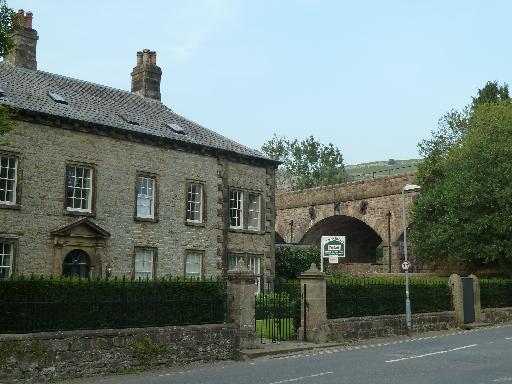
Fig 1 Marshfield House and the railway line
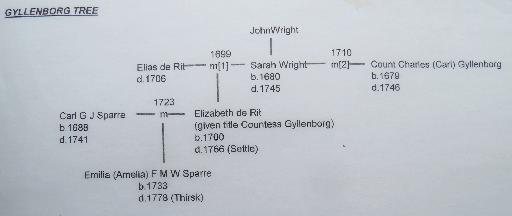
Fig 2 Reproduced from Lettsom map redrawn by Alan King with his permission
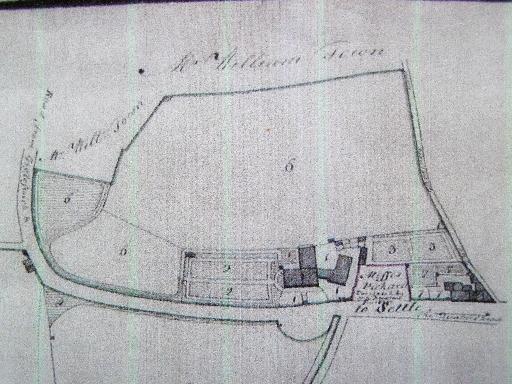
Fig 3 West Yorkshire Archive Service, Leeds. WYL163/673 (partial image). Reproduced with permission of WYAS. 1815
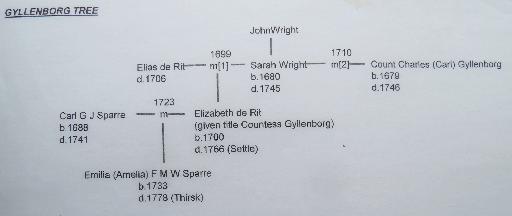
Fig 4 Gyllenborg family tree
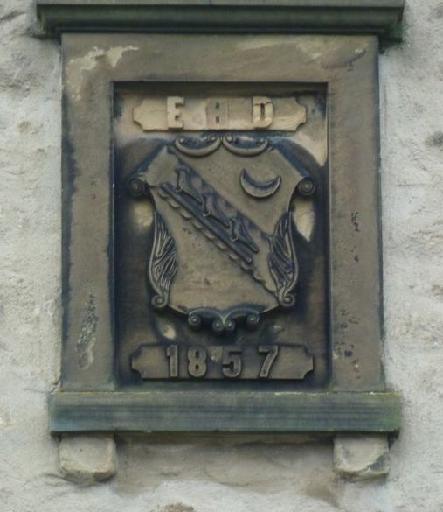
Fig 5 Plaque on Marshfield House